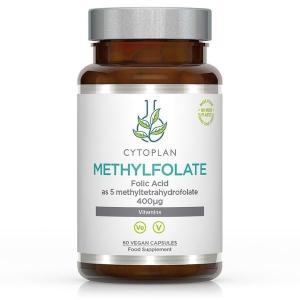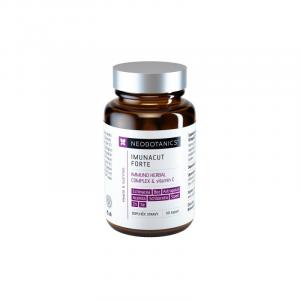
How does periostitis develop and what to do about it?

Understanding the Causes, Treatment, and Prevention of Periostitis
Periostitis, professionally known as periostitis, is a painful condition that can affect individuals of various ages and physical conditions. The periosteum, a thin layer of connective tissue covering the surface of bones, is an essential component of our musculoskeletal system. This tissue not only serves to protect the bones themselves but also as their source of nourishment and regeneration. However, when it becomes inflamed, this condition can become very uncomfortable, painful, and in some cases, limiting.
What is the periosteum and why is it important?
The periosteum is richly vascularized tissue that plays a crucial role in bone metabolism. It contains blood vessels, nerve endings, and cells involved in bone tissue renewal. Thanks to its structure and function, it allows for bone regeneration in cases of injuries, fractures, or damage due to overload. Without a healthy periosteum, our bones would lose the ability to grow and regenerate, which would have far-reaching impacts on the entire musculoskeletal system.
Periostitis occurs when this tissue is exposed to excessive stress, repeated mechanical irritation, or infection. The result is an inflammatory process that can affect not only the periosteum itself but also adjacent bones and tissues.
How does periostitis occur?
The causes of periostitis are varied, each requiring specific attention and treatment. Most commonly, inflammation arises due to excessive physical load. This problem is common among athletes who repeatedly overstrain certain body parts, such as the shins during running or arms during strength sports. Prolonged repetitive movements cause microscopic tears in tissues, leading to irritation and subsequent periosteum inflammation.
Another significant cause is infection. If bacteria penetrate tissues near bones, such as during injury or tooth inflammation, they can attack the periosteum. Infectious inflammation is often associated with fever and other systemic symptoms as the body tries to fight the infection. If the infection is not treated in time, it can spread and cause severe complications, such as inflammation of the bone itself (osteomyelitis).
In addition to mechanical overload and infection, periostitis can also be related to autoimmune diseases such as rheumatoid arthritis, where the immune system attacks its own tissues, including the periosteum. This type of inflammation tends to be chronic and usually requires long-term treatment.
Try our natural products
Symptoms of Periostitis
Periostitis typically manifests gradually, and its symptoms can be subtle at first. The most common symptom is pain, which is usually deep, sharp, or throbbing. The pain can worsen with movement or load on the affected area, but sometimes persists even at rest.
Another common symptom is swelling and redness in the affected area. The tissues around the periosteum can be warm to the touch, indicating an active inflammatory process. In more severe cases, fever may occur, indicating that the body is fighting a systemic inflammation.
If the inflammation is not treated, it may lead to restricted mobility in the affected area. Pain and swelling can hinder normal movement, affecting both daily activities and athletic performance. Chronic inflammation can lead to permanent tissue damage, worsening the quality of life.
How is Periostitis Treated?
Treatment of periostitis focuses on eliminating the cause of inflammation and alleviating symptoms. It usually involves a combination of rest, pharmacological treatment, and physiotherapy. In severe cases, surgical intervention may be necessary.
- Rest and reduction of physical activity – The most important step is to stop the activity that caused the problem. Affected tissues need time to regenerate, which requires limiting strain.
- Icing and anti-inflammatory medications – Cold compresses help reduce swelling and pain. Anti-inflammatory drugs, such as ibuprofen, work to reduce inflammation.
- Antibiotics – In cases of bacterial infection, antibiotics are crucial for eliminating pathogens and preventing the spread of infection.
- Physical therapy – Helps restore mobility and relieve pain. Special techniques support healing and tissue regeneration.
- Surgical intervention – If inflammation persists or is associated with an abscess, surgical intervention may be necessary to remove damaged tissue.
How to Prevent Periostitis?
Preventing periostitis is key, especially for those exposed to risk factors such as intensive sports or physically demanding work. It is important to gradually increase physical load so the body can naturally adapt to new demands. Quality footwear and proper movement technique can minimize the risk of overload.
Diet also plays an important role. Adequate vitamins, minerals, and calcium strengthen bone tissues and support periosteum health. Hygiene is essential for preventing infections – every wound should be carefully disinfected and protected from contamination. Regular visits to the doctor or dentist help detect potential problems early, before inflammation develops.
Why is it important to act quickly?
Periostitis is not a condition that can be ignored. Without proper treatment, it can progress to a chronic stage and cause permanent tissue damage. If you notice symptoms such as persistent pain, swelling, or redness, do not hesitate to seek professional help. Early diagnosis and appropriate treatment of periostitis can significantly improve prognosis and prevent serious complications. Take care of your body, listen to its signals, and focus on prevention to maintain health and quality of life.







